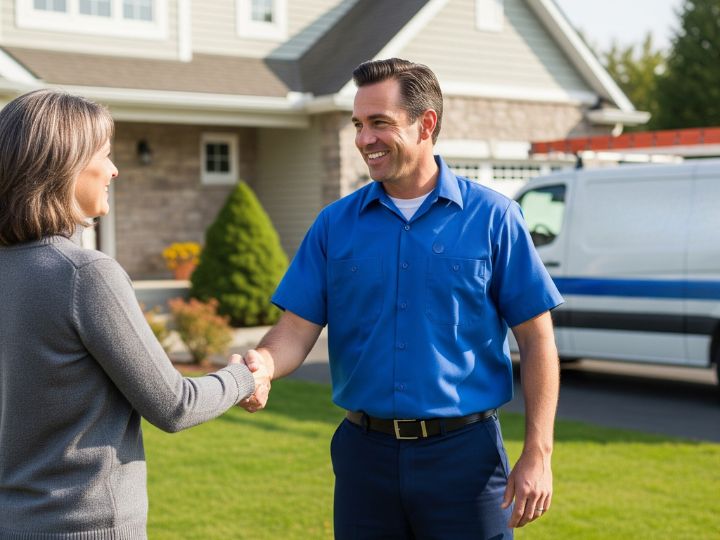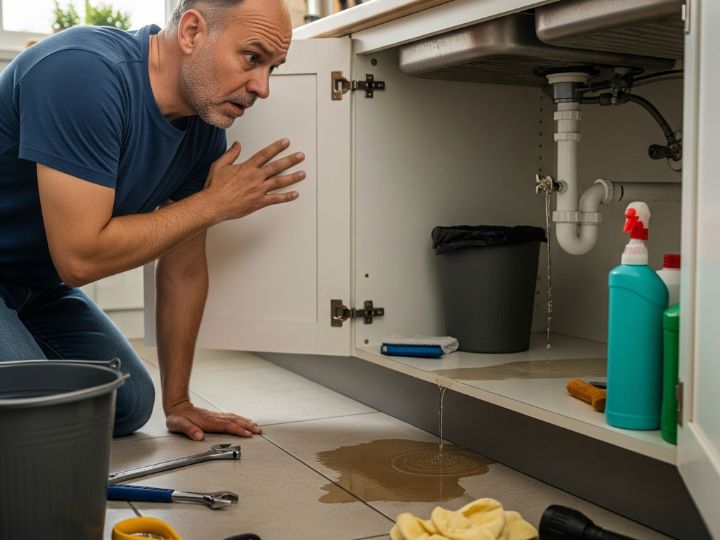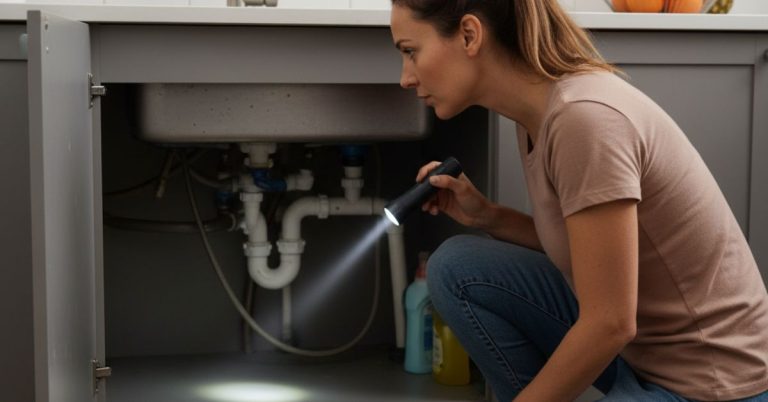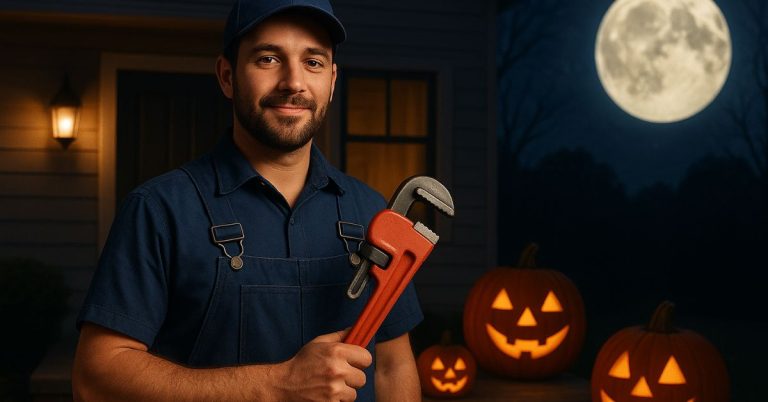Plumbing problems often start small—but ignoring them can lead to major headaches. From mysterious leaks to foul odors, there are clear signs your home needs plumbing maintenance before things spiral out of control. In this blog, we’ll explore eight warning signals that shouldn’t be ignored. Recognizing these signs early can help you avoid costly repairs and water damage. Don’t wait until it’s too late—these are the red flags that demand immediate plumbing care to keep your home safe and functional.
Table of Contents
1. Persistent Low Water Pressure
If your faucets or showers are trickling rather than flowing, it’s not just an inconvenience—it’s a red flag. Low water pressure often indicates one of the following:
- A hidden leak in your system
- Corroded pipes restricting flow
- Clogged aerators or pipe blockages
- Issues with the main water line
In some cases, low pressure can be symptomatic of pipe leaks behind walls, leading to structural damage and mold growth. Immediate professional inspection is vital.
2. Slow or Frequently Clogged Drains
While a single clogged drain might not seem serious, recurrent drain blockages throughout the home point to a deeper issue, such as:
- Sewer line blockage
- Accumulated grease, hair, or foreign materials
- Tree roots infiltrating the pipes
Ignoring these signs can result in sewage backup, water damage, and hazardous health conditions. Proper diagnostics and drain cleaning are critical to prevent escalation. Regular maintenance and early intervention can save homeowners from costly repairs and ensure a safe, functional plumbing system.
3. Unusual Noises from Pipes
Do you hear banging, gurgling, or whistling sounds when using water? These noises may signal:
- Air trapped in the pipes
- Water hammer, caused by abrupt valve closure
- Pipe joints that are loosely fastened
- Mineral buildup narrowing pipe diameter
These unusual sounds often indicate underlying plumbing issues that can compromise your system’s integrity. Left unresolved, the continuous pressure and vibrations may lead to damaged fittings or pipe bursts. Prompt professional inspection can help identify and fix the root cause before serious damage occurs.
4. Sudden Spike in Water Bills
A significant, unexplained increase in your water bill should never be ignored. It’s often a telltale sign of:
- Leaking toilets or faucets
- Underground pipe leaks
- A constantly running water heater or sprinkler system
Even small, hidden leaks can waste thousands of gallons of water each month, leading to inflated utility costs and potential water damage. Conducting a water leak detection inspection is essential to pinpoint the source, prevent further loss, and protect both your home and your wallet.
5. Discolored or Foul-Smelling Water
Rusty, cloudy, or strange-smelling water should raise immediate concern. The causes may include:
- Corroded galvanized pipes
- Bacteria buildup in stagnant water
- Problems in the municipal supply
- A failing water heater
These issues can compromise the safety and usability of your water. Brown or yellowish discoloration often points to internal pipe corrosion. Left unaddressed, it can negatively affect both water quality and pipe integrity. Prompt professional evaluation is necessary to restore safe and clean water in your home.
6. Water Stains or Damp Spots on Walls and Ceilings
Discoloration, bubbling paint, or persistent dampness on ceilings, walls, or floors usually means that water is escaping from pipes hidden behind surfaces. This can result in:
- Mold or mildew growth – which can have serious health consequences. Learn more about the health risks of mold exposure from the EPA.
- Structural deterioration
- Increased risk of electrical hazards
Even minor leaks can cause serious long-term damage if ignored. Persistent dampness on ceilings is a clear warning sign that moisture is accumulating behind walls. Immediate plumbing inspection is crucial to prevent costly repairs and protect your home’s safety.
7. Sewage Smell or Mold Odor Indoors
A foul smell resembling rotten eggs or mold within your home is a major warning sign. Common sources include:
- Cracked or clogged sewer lines
- Dried-out P-traps in infrequently used drains
- Mold growth from persistent leaks
Sewer gases are not only unpleasant but also hazardous to your health, as they may contain toxic elements like methane and harmful bacteria. schedule a prompt sewage leak repair to locate and fix the source immediately.
8. Aging Plumbing System
If your home is over 30 years old and the plumbing has never been replaced, it’s time for a full system evaluation. Older homes often use materials such as:
- Galvanized steel, which corrodes over time
- Polybutylene, prone to cracking and failure
- Cast iron, which can rust and collapse
Signs of outdated plumbing include frequent leaks, strange-tasting water, and poor water flow. Investing in professional repiping services can restore reliability, prevent costly damage, and increase your property’s overall value.
The Cost of Ignoring Plumbing Issues
Postponing plumbing repairs doesn’t just risk water damage—it often multiplies costs exponentially. Small leaks can lead to mold growth, damaging walls and floors. Prolonged moisture weakens drywall and causes wood rot, requiring extensive repairs. Water can also infiltrate electrical systems, posing fire hazards and costly fixes. Ignoring minor issues allows them to escalate into major problems, turning affordable repairs into expensive home restoration projects that disrupt your life and budget.
How to Stay Ahead of Plumbing Emergencies
The best way to prevent these issues is through routine plumbing maintenance, including:
- Annual inspections
- Drain cleaning services
- Water pressure checks
- Replacing old or corroded fixtures
Homeowners should also monitor their water bills, inspect exposed pipes, and pay attention to strange sounds or odors.
Get your water heater repaired or replaced the same day
Call a Licensed Plumbing Professional Immediately

Don’t let minor inconveniences evolve into major disasters. The moment you detect any of these signs, contact a certified plumber to perform a comprehensive system diagnosis. A professional can use tools like:
- Thermal imaging to detect hidden leaks
- Video camera inspections to assess drain and sewer lines
- Pressure tests to evaluate pipe strength
Fast action can prevent costly water damage and health risks. Contact 5 Star Best Plumbing today for trusted, expert plumbing solutions.
Final Thoughts
Plumbing issues rarely resolve themselves—and often get worse with time. Whether it’s a dripping faucet, a hidden leak, or a full-blown pipe burst, taking immediate action is key to avoiding expensive damage and disruption to your daily life. Being proactive protects not only your plumbing system but also your home’s structural integrity and your family’s well-being.
If you’ve noticed any of the warning signs listed above, don’t wait. Contact us now to connect with a licensed professional who can inspect, diagnose, and repair the problem before it escalates. Protect your home with timely, expert plumbing care.
FAQs
What causes low water pressure in my home?
Low water pressure is often caused by hidden leaks, pipe corrosion, or blockages in your plumbing system. It can also result from issues with the municipal water supply or your main water line.
Why do I keep getting clogs in multiple drains?
Frequent clogs in multiple drains may indicate a problem in the main sewer line or deep blockages within your plumbing. It’s a sign that professional inspection and cleaning are needed.
Is discolored or smelly water dangerous?
Yes, it can be a sign of pipe corrosion, bacterial contamination, or water heater issues. This type of water is unsafe for use and should be tested and addressed immediately.
What should I do if I smell sewage or mold in my home?
A sewage or mold odor signals a serious issue like a sewer line leak or hidden water damage. You should contact a licensed plumber promptly to locate and fix the source.
How often should I have my plumbing system inspected?
It’s recommended to schedule a professional plumbing inspection at least once a year. Regular maintenance helps detect issues early and avoids costly repairs later.








